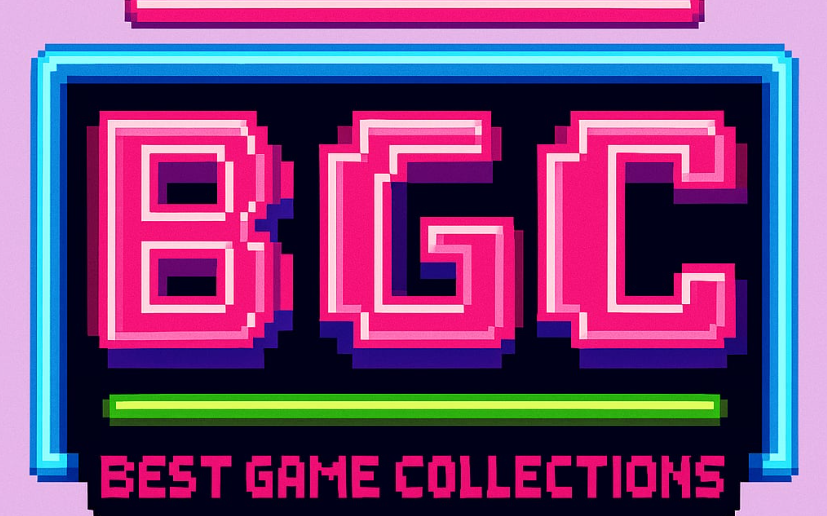 We’re here today talking about Mirage Feathers, released by the indie game developer and publisher, oyasumi Workshop. It’s relatively new, having been released on Sept. 6th, 2024, but it’s already receiving Overwhelmingly Positive reviews on Steam. One review in particular mentioned its resemblance to Space Harrier, which I must agree with. This game feels like Space Harrier’s pumped-up, modern cousin with vastly improved graphics and interesting mechanics. SpeedyGamer99, would you agree?
We’re here today talking about Mirage Feathers, released by the indie game developer and publisher, oyasumi Workshop. It’s relatively new, having been released on Sept. 6th, 2024, but it’s already receiving Overwhelmingly Positive reviews on Steam. One review in particular mentioned its resemblance to Space Harrier, which I must agree with. This game feels like Space Harrier’s pumped-up, modern cousin with vastly improved graphics and interesting mechanics. SpeedyGamer99, would you agree?
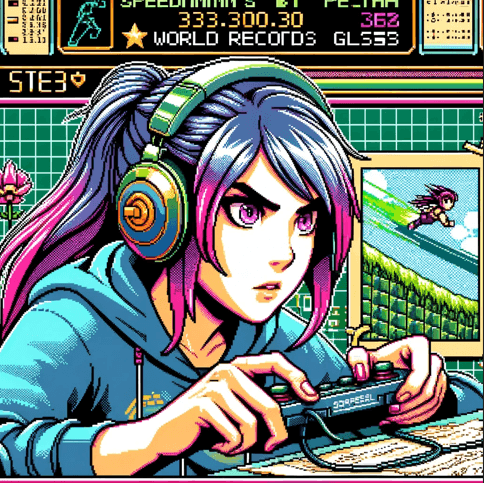 Absolutely! Space Harrier was all about speed and agility and Mirage Feathers certainly does the legacy proud. Though I have to add, where Mirage Feathers really stands out is its combat. Notari’s advanced fire control system, which locks onto a target automatically when it crosses your crosshair, is clever in that it allows the player to focus more on movement and evasion. A feature like that is very beneficial for speedrunners like myself.
Absolutely! Space Harrier was all about speed and agility and Mirage Feathers certainly does the legacy proud. Though I have to add, where Mirage Feathers really stands out is its combat. Notari’s advanced fire control system, which locks onto a target automatically when it crosses your crosshair, is clever in that it allows the player to focus more on movement and evasion. A feature like that is very beneficial for speedrunners like myself.
 Interestingly enough, I feel that the mechanics here also cater to explorers and adventurers. Standard enemy attack patterns are intuitive enough for combat to feel smooth, while new weapon upgrades offered by the AI companion, Luciolla, add a delightful sense of discovery. This variety in weapons impacts how you approach battles, especially when it comes to navigating through different enemy formations.
Interestingly enough, I feel that the mechanics here also cater to explorers and adventurers. Standard enemy attack patterns are intuitive enough for combat to feel smooth, while new weapon upgrades offered by the AI companion, Luciolla, add a delightful sense of discovery. This variety in weapons impacts how you approach battles, especially when it comes to navigating through different enemy formations.
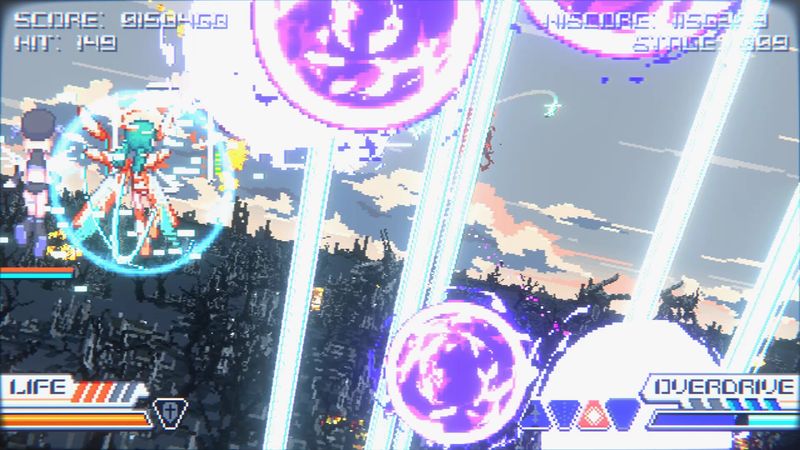
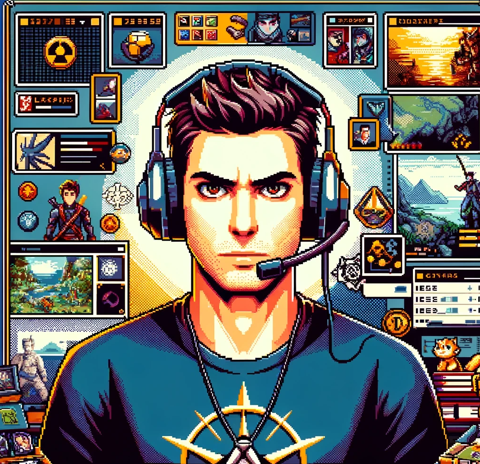 As someone who enjoys the fine details that developers put into their games, I agree. The OVERDRIVE function not only provides an incredibly satisfying destructive force but also adds a layer of strategy. When do you use it? When do you save it for that incoming boss fight? It’s these questions that make the game more engaging beyond its intense combat.
As someone who enjoys the fine details that developers put into their games, I agree. The OVERDRIVE function not only provides an incredibly satisfying destructive force but also adds a layer of strategy. When do you use it? When do you save it for that incoming boss fight? It’s these questions that make the game more engaging beyond its intense combat.
 What about the narrative aspect of the game? Any thoughts there?
What about the narrative aspect of the game? Any thoughts there?
 The story, despite being a secondary element in some shooter games, is actually compelling here. You play as Notari, a cybernetic air-superiority fighter, searching for her friend Miroita. Their complicated history developed alongside the combat missions, creating a sense of urgency and purpose.
The story, despite being a secondary element in some shooter games, is actually compelling here. You play as Notari, a cybernetic air-superiority fighter, searching for her friend Miroita. Their complicated history developed alongside the combat missions, creating a sense of urgency and purpose.
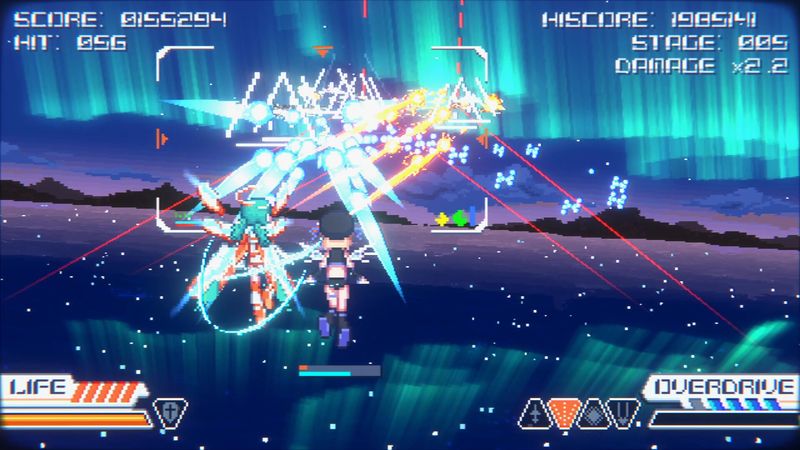
 Indeed, the character interactions outside battle through text-based dialogues and cute character art was a refreshing take in this genre. The characters felt less like game pieces and more like friends you genuinely cared for. Although, some might argue it’s not to the level of a Visual Novel or JRPG’s deep narrative, the story does its job in engaging the player.
Indeed, the character interactions outside battle through text-based dialogues and cute character art was a refreshing take in this genre. The characters felt less like game pieces and more like friends you genuinely cared for. Although, some might argue it’s not to the level of a Visual Novel or JRPG’s deep narrative, the story does its job in engaging the player.
 And how does the game look? The visuals are an important part of player immersion.
And how does the game look? The visuals are an important part of player immersion.
 I have to say, Mirage Feathers is visually impressive. It’s not just about graphical fidelity, but more about an artistic style that matches the game perfectly. The pseudo-3D rail shooter format presents some stunning stages, and the character art we see in dialogues is absolutely adorable.
I have to say, Mirage Feathers is visually impressive. It’s not just about graphical fidelity, but more about an artistic style that matches the game perfectly. The pseudo-3D rail shooter format presents some stunning stages, and the character art we see in dialogues is absolutely adorable.
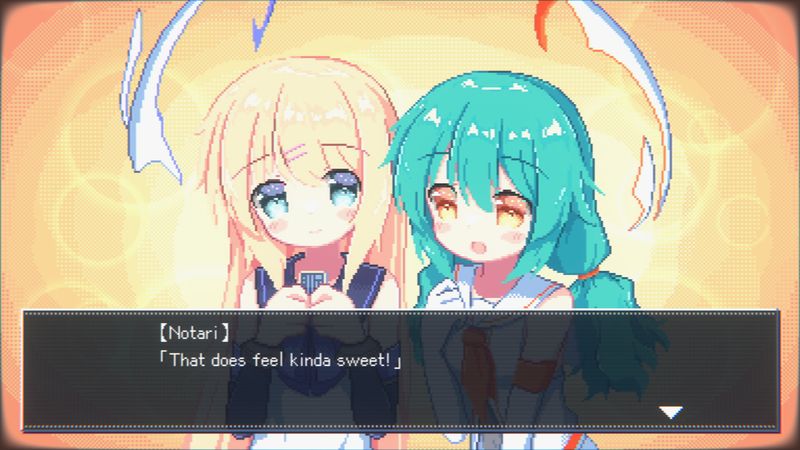
 Agreed, the level design and enemy visual design also impressed me. It’s quite an achievement that despite the chaotic nature of aerial combat, object readability was always clear. One critique I saw from the user reviews was the difficulty in dodging and knowing when projectiles are coming, which I can agree with, but that’s part of the game’s challenge.
Agreed, the level design and enemy visual design also impressed me. It’s quite an achievement that despite the chaotic nature of aerial combat, object readability was always clear. One critique I saw from the user reviews was the difficulty in dodging and knowing when projectiles are coming, which I can agree with, but that’s part of the game’s challenge.
 Speaking of challenge, let’s talk about that. From your perspectives, how does it fare?
Speaking of challenge, let’s talk about that. From your perspectives, how does it fare?
 I think the difficulty ramps up nicely. It starts comfortingly simplistic, but progressively introduces more challenging enemy patterns and terrain obstacles. It’s all about keeping your cool while evading high-speed projectiles. I found it satisfying without being frustratingly hard.
I think the difficulty ramps up nicely. It starts comfortingly simplistic, but progressively introduces more challenging enemy patterns and terrain obstacles. It’s all about keeping your cool while evading high-speed projectiles. I found it satisfying without being frustratingly hard.
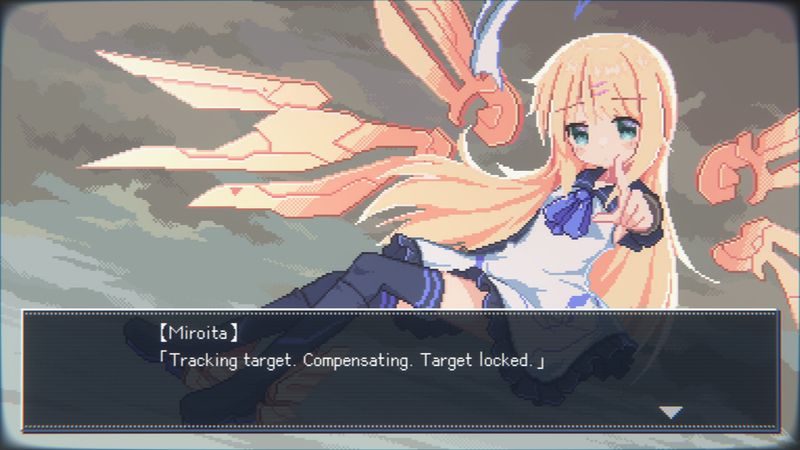
 I concur. The endless mode and varying difficulty made aiming for a better score more enticing, thereby increasing replayability. The challenge becomes not just about completing a level, but doing so with style or the highest score possible.
I concur. The endless mode and varying difficulty made aiming for a better score more enticing, thereby increasing replayability. The challenge becomes not just about completing a level, but doing so with style or the highest score possible.
 We should also talk about the sound design and music. I’d argue they’re just as vital in setting the right atmosphere for a game of this nature.
We should also talk about the sound design and music. I’d argue they’re just as vital in setting the right atmosphere for a game of this nature.
 Very true. The game’s soundtrack is superb, enhancing immersion and contributing to the rhythm of the gameplay. It also evidently resonated with the players, as seen in the user reviews.
Very true. The game’s soundtrack is superb, enhancing immersion and contributing to the rhythm of the gameplay. It also evidently resonated with the players, as seen in the user reviews.
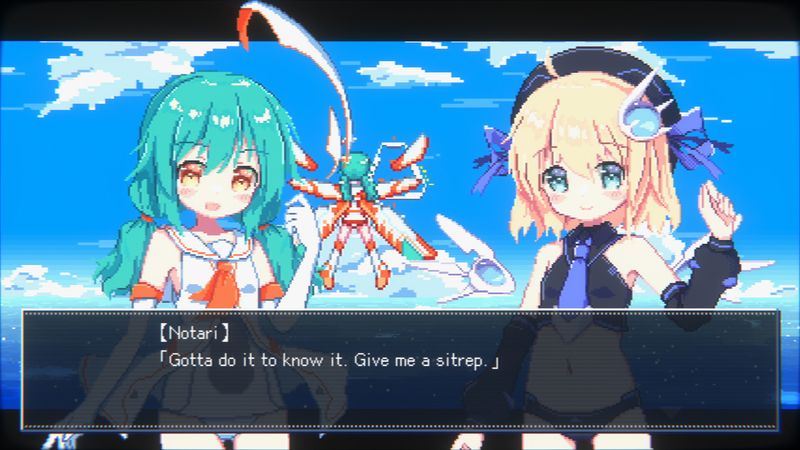
 Lastly, what are your thoughts on replayability?
Lastly, what are your thoughts on replayability?
 For me, the discovery of more powerful weapons and the addition of Endless Mode present a significant replay value. And not to forget, the humor and light-hearted character banter makes me want to revisit the story mode occasionally.
For me, the discovery of more powerful weapons and the addition of Endless Mode present a significant replay value. And not to forget, the humor and light-hearted character banter makes me want to revisit the story mode occasionally.
Time for our final thoughts. I must say, oyasumi Workshop has done a commendable job with Mirage Feathers. It’s a delightful mix of fast-paced aerial combat, charming story, and a unique visual style that sets it apart. For those who enjoyed it, I would recommend Astebreed and Ginga Force, both offering a similar blend of action and story, along with an anime aesthetic.
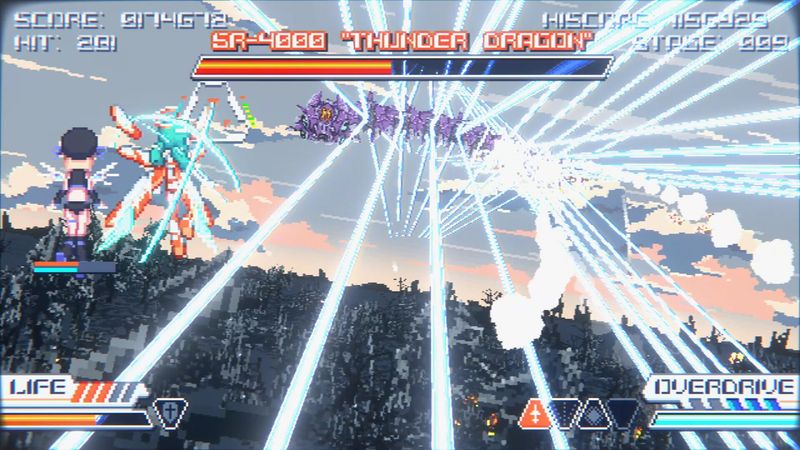
 Absolutely, this game is an absolute blast for us speedrunners. It’s fast, challenging, and rewarding in all the right ways. For anyone liking the speed aspect, I’d suggest F-Zero GX and Fast Racing NEO – they offer a thrilling rush of speed which is reminiscent of Mirage Feathers combat.
Absolutely, this game is an absolute blast for us speedrunners. It’s fast, challenging, and rewarding in all the right ways. For anyone liking the speed aspect, I’d suggest F-Zero GX and Fast Racing NEO – they offer a thrilling rush of speed which is reminiscent of Mirage Feathers combat.
 From a completionist point of view, Mirage Feathers does not disappoint. There’s plenty of depth and detail along with lots of replay value. For others who love attention to detail and completionists of course, Daemon X Machina and Zone of the Enders: The 2nd Runner would be great next experiences after Mirage Feathers.
From a completionist point of view, Mirage Feathers does not disappoint. There’s plenty of depth and detail along with lots of replay value. For others who love attention to detail and completionists of course, Daemon X Machina and Zone of the Enders: The 2nd Runner would be great next experiences after Mirage Feathers.
 As an explorer, the game’s open world and discovery-base gameplay won me over. Players who love exploring should quite enjoy Rez Infinite and Panzer Dragoon as they share some of Mirage Feather’s best aspects.
As an explorer, the game’s open world and discovery-base gameplay won me over. Players who love exploring should quite enjoy Rez Infinite and Panzer Dragoon as they share some of Mirage Feather’s best aspects.
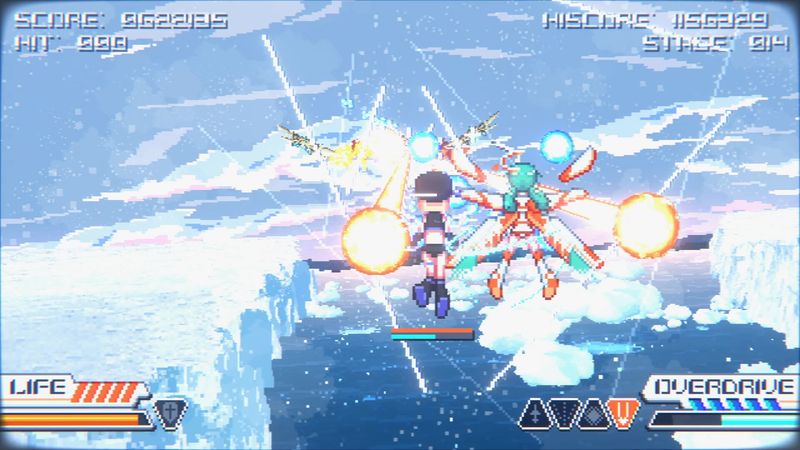
 Well, there you have it. We give a big nod to oyasumi Workshop for crafting such a unique and delightful addition to the rail-shooter genre with “Mirage Feathers.” Now, if you’ll excuse me, I have some cybernetic aircrafts to destroy…
Well, there you have it. We give a big nod to oyasumi Workshop for crafting such a unique and delightful addition to the rail-shooter genre with “Mirage Feathers.” Now, if you’ll excuse me, I have some cybernetic aircrafts to destroy…
